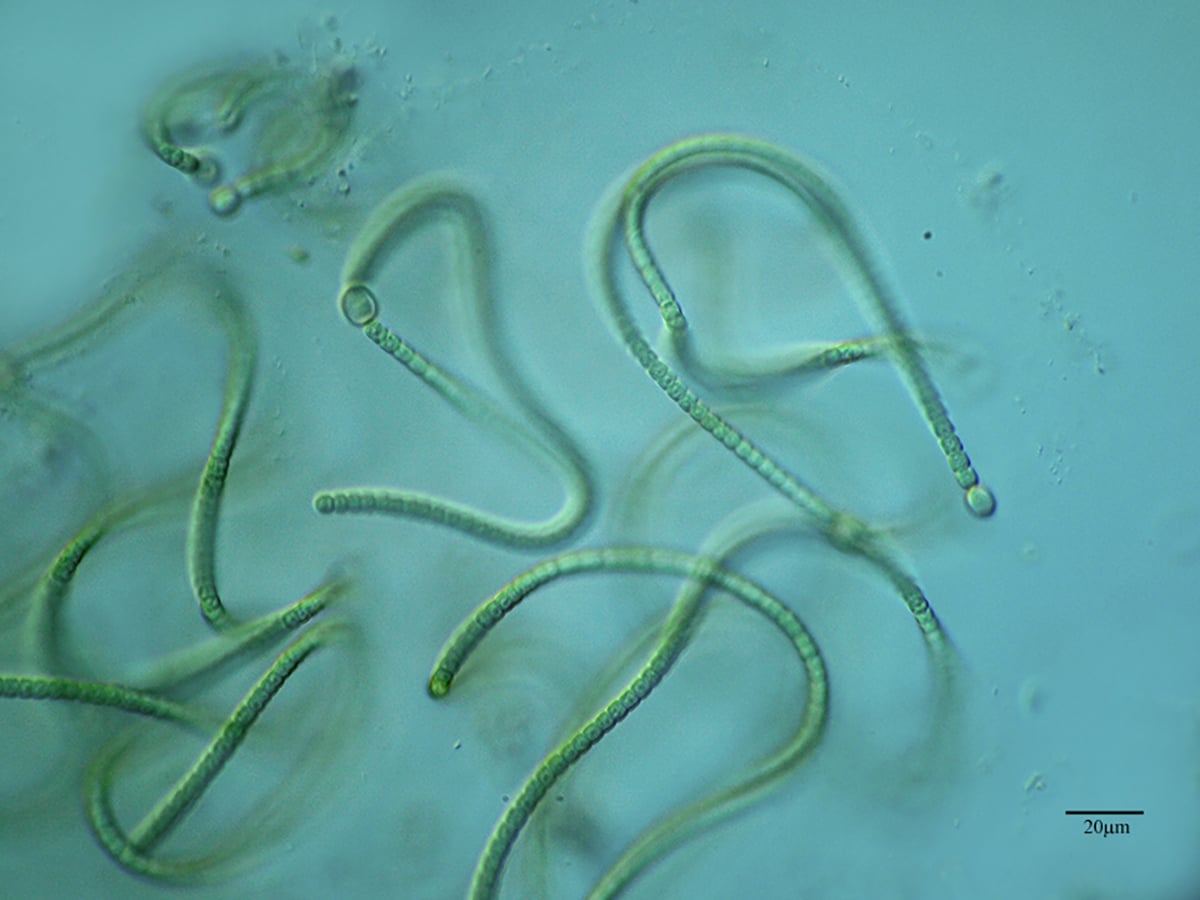

As in the animal world and in the plant world there are many categories, groups and species, in that of microorganisms too. Specifically, bacteria have a very remarkable edge for their various benefits: Cyanobacteria. They are usually related to algae and marine and aquatic plants of bluish and greenish tones.
These organisms have been of the utmost importance at an ecological and evolutionary level. His discovery was a success in the world of botany. If you want to know more about cyanobacteria, their characteristics and their benefits and harms, keep reading this article.
What are cyanobacteria and where are they found?


Among the bacteria there are various phyla or categories, one of them is cyanobacteria. These have the ability to carry out oxygenic photosynthesis, in which they acquire the electrons from the water, thereby releasing oxygen as a by-product. Because they are the only prokaryotes to do so, they are also often called oxyphotobacteria.
For a long time, cyanobacteria were known as cyanophytic algae, which literally means “blue plants,” or cyanophytes, which translates to “blue algae.” But in Spanish they have often been designated as blue-green or blue-green algae. After the discovery of the differentiation between eukaryotic and prokaryotic cells, it was found that there are only these prokaryotic algae, hence the name of cyanobacteria.


Related article:
Catechins
There are a few main characteristics of cyanobacteria that we want to highlight. As we have already said before, they are prokaryotic and unicellular. In addition, they live in colonies in the form of hollow spheres, sheets or filaments. Another feature to highlight is that its most common habitat is wet land and water. It is also interesting to know that they are capable of living at both high and low temperatures. As for reproduction, this is carried out by the fragmentation of their filaments. Although the existence of cyanobacteria is very advantageous for ecosystems, some species produce a toxic material capable of poisoning other living beings that share the same environment.
Habitat
The most common habitats among cyanobacteria are those lentic environments, that is, ponds and lakes, apart from dead trunks, tree bark and moist soils. Also, some species are halophilic and live in the oceans. Others, on the other hand, are thermophilic and inhabit geysers.
As cyanobacteria are very old, the niches that they have come to colonize are very diverse. Although they are not very demanding in terms of the environment, they are in relation to water. We can find these organisms both on land and in water and in areas with high or low temperatures. Cyanobacteria are capable of forming calcareous structures and even inhabit wastewater.
Cyanobacteria: Examples
Although there are many cyanobacteria that we have evidence of today, we are going to highlight only a few. An example would be bacteria called Aphanizomenonfls-water. These are found in both fresh and salt water. What’s more, They are grown for use as fertilizer, to create drugs, or for food. Another example would be the bacteria called arthrospiraplatensis, also called Spirulinas. They are very common in tropical and subtropical waters. In addition, we can find them in water whose carbonate content is high.
Cyanobacteria: Benefits and Harms


Like many other bacteria, cyanobacteria are very important ecologically and evolutionarily. Through the oxygenic photosynthetic process, they notably contribute to the oxygenation of the primitive atmosphere. Apart from this very important task, they are the only organisms that can fix atmospheric nitrogen. This ability is vital for those beings that live in symbiosis with cyanobacteria, as they provide the nitrogenous compounds they need. Among them are fungi, protozoa, and some plants. A curious fact is that cyanobacteria lack a cell wall in lichens, functioning as chloroplasts that produce food for their symbiotic companion.
Similarly, the incorporation of nitrogen into the soil makes them a good choice for fertilizers, since they improve the quality of the soil. Furthermore, cyanobacteria were the first in terms of the production of chlorophyll A and B and other photosynthetic pigments. They are also the precursors of chloroplasts in both terrestrial flora and algae.


Related article:
spermatophyte
However, we must not forget that some species of cyanobacteria produce certain dangerous toxins for other living beings that inhabit the same environment or that consume the water in which these organisms are found. The poisons they produce can be of different types:
- Cytotoxic: They attack cells.
- Hepatotoxic: They attack the liver.
- Neurotoxic: They attack the nervous system.
The world of botanicals is very wide and very interesting. Each organism contributes its abilities so that ecosystems function and are maintained. Cyanobacteria, despite the toxins they can produce, are part of various niches that would not be the same without them. In order to avoid changes that could cause the disappearance of countless species of all kinds, we must take care of the planet.

